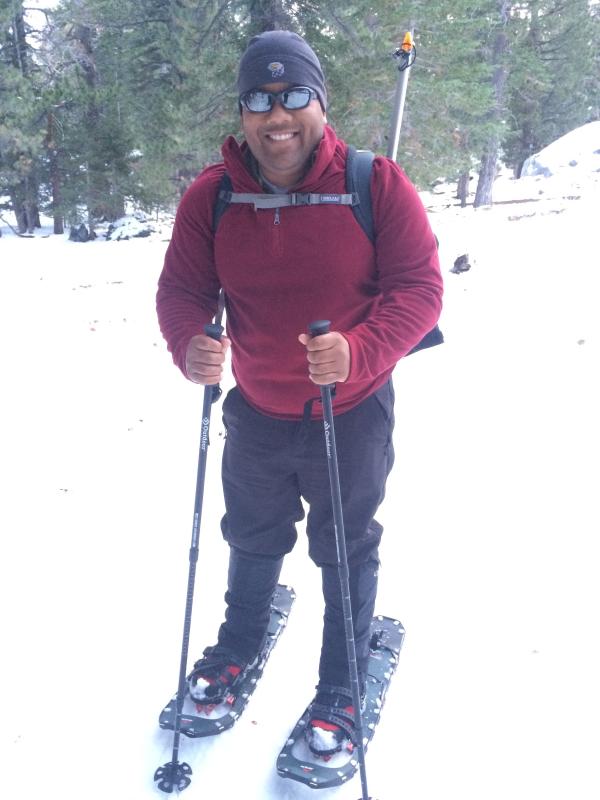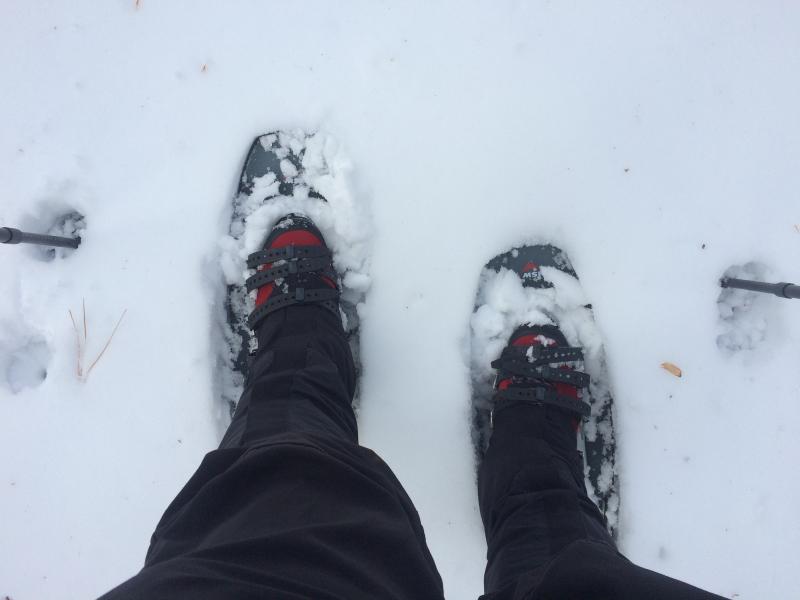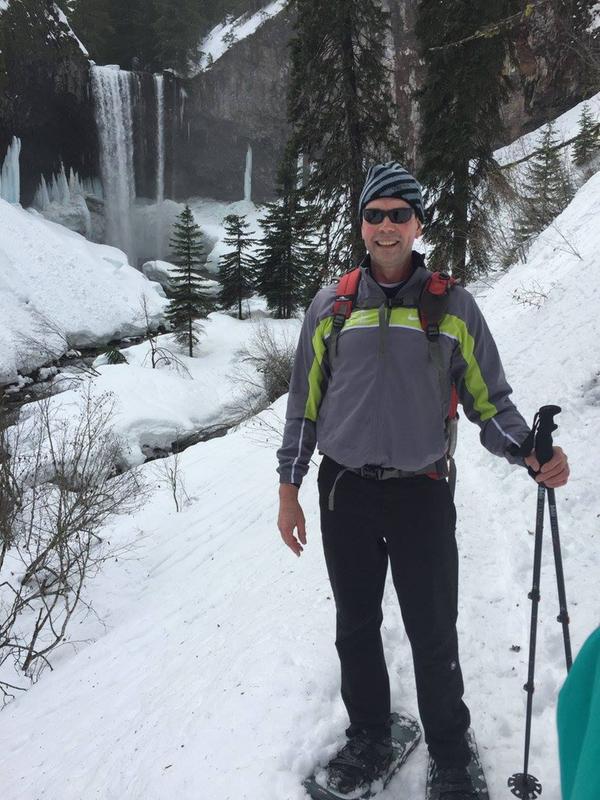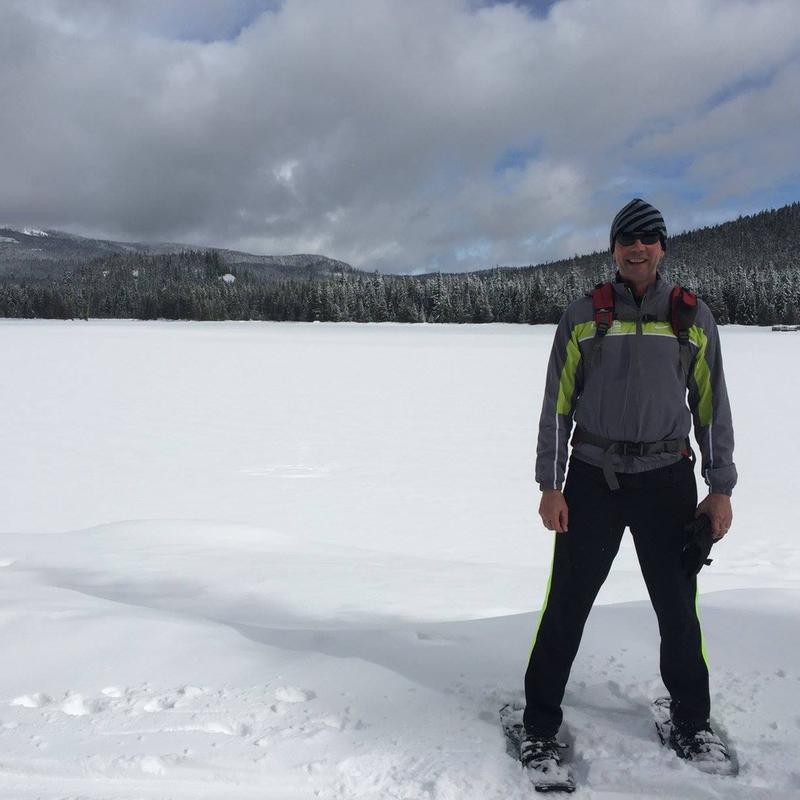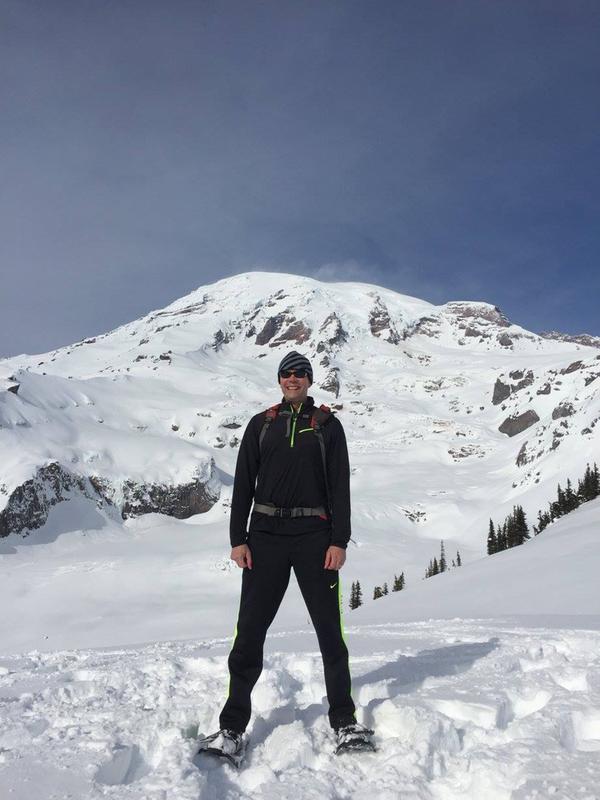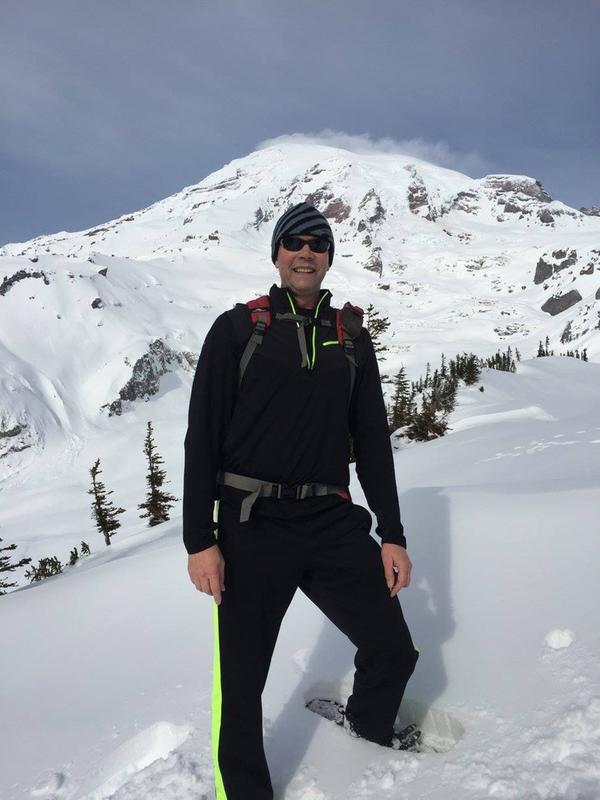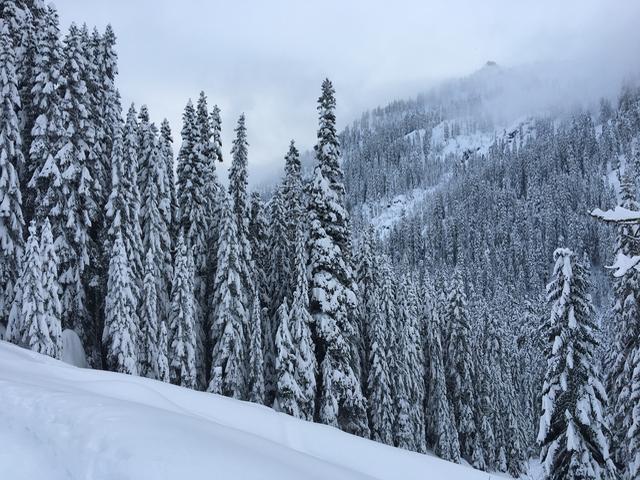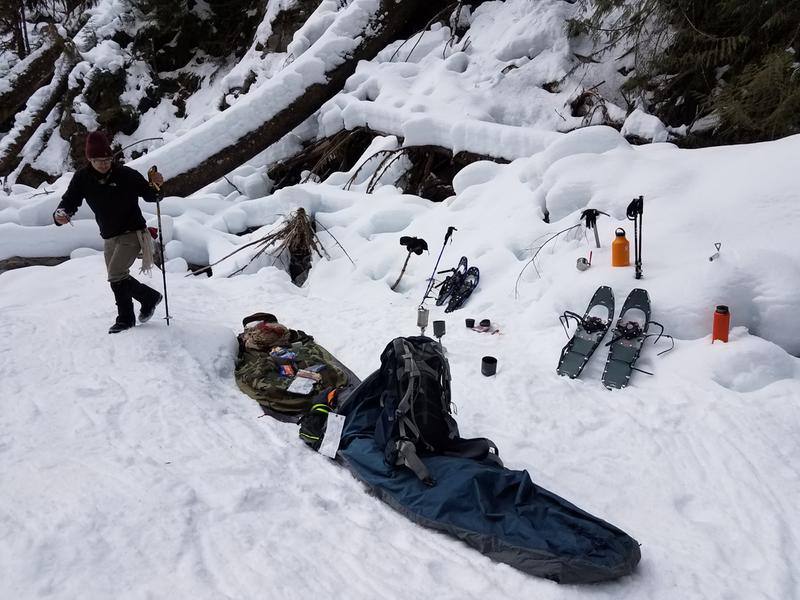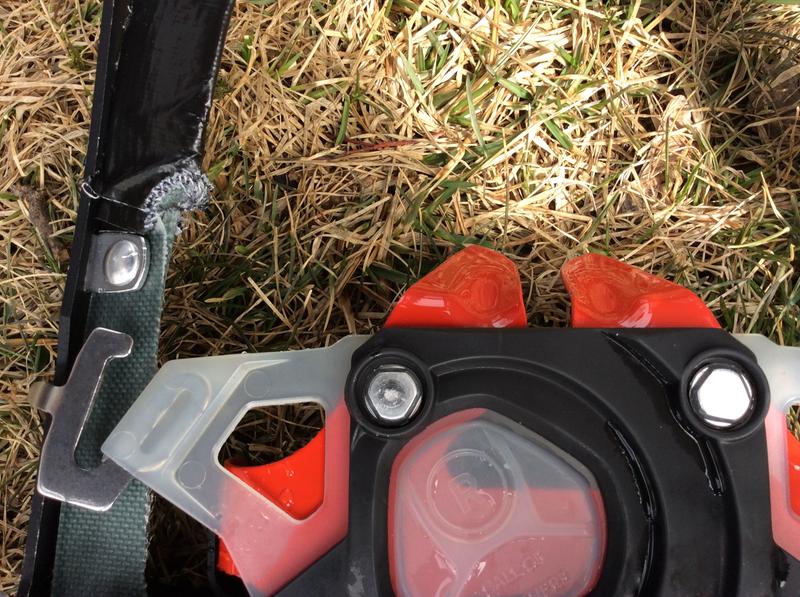MSR Lightning Ascent Snowshoes
This product is not available.
With tough, reliable decking, and security that tubular frames can't touch, the ultralight Lightning Ascent snowshoes provide a solid platform for exploring mountainous winter wonderlands.
Shop similar products- Dual-component PosiLock AT bindings offer secure attachment; aggressive steel cross-members and Ergo Televator heel lifts back you up with every step
- 2-piece, independently conforming PosiLock AT bindings create a secure, freeze-resistant attachment, regardless of footwear
- 360 Traction frames offer edge-to-edge grip; the split teeth of Torsion2 crampons distribute forces for continuous contact—delivering traction on any terrain
- Add-on modular flotation tails (sold separately) allow you the maneuverability of a smaller, primary snowshoe with the added, on-demand flotation of optional, 5-in. tails
- Add-on modular tails increase flotation for hikers up to 250 lbs. on 22 in. snowshoes, up to 280 lbs. on 25 in. snowshoes and up to 300 lbs. on 30 in. snowshoes
- Ergo Televator heel lifts reduce fatigue and increase traction on the steeps with an ergonomic design that engages with a simple flick of a pole grip
| Snowshoe Closure | Rubber Strap |
|---|---|
| Frame Material | 7000-series aluminum |
| Deck Material | Urethane-impregnated nylon |
| Crampon Material | Powder-coated steel |
| Gender | Unisex |
Review this Product
Adding a review will require a valid email for verification
Most Helpful Favorable Review
Most Helpful Critical Review
Customer Images
Can't Imagine a Better Snowshoe
I took an REI class on snowshoeing on Mt. Rainier. The snowshoes provided were the MSR Lightning Ascents. My experience was excellent. Prior to the class, I was going to buy the Revo Ascent. After reading some reviews about the Revos being noisy and heavier, I went with the Lightnings and haven't regretted it at all. My friend rented some snowshoes, and as I was behind him, I noticed his heels not staying centered in the snowshoes. The Lightnings keep your heel right in the center, they are lightweight, they appear to be very durable, and they have amazing traction. There's really no learning curve with them. If you can walk, you can snowshoe. After seeing my great experience with these, my wife is going to get a pair.
Well made in the U.S.A.
I bought these in January 2015 and I found that they work well on ice and all different types of snow. My weight is 230 lbs and my backpack was around 15 lb in the photo. Even without the modular tails, I had good flotaion over the soft powder when hiking off of the trail. The MSR Lighting Accent Snowshoes are the best snowshoes on the market, but I believe that they are over priced. I am happy however, that my money is going to a product made in the U.S.A.
Great in mixed rock/ice/snow.
Bought these for a winter backpacking trip in Olympic National Park. Got the 30" version (I'm 210 lbs, 250ish with pack) and put these bad boys through everything. They held up incredibly well and gave me all the confidence I needed to get through 19 miles of some pretty sketchy terrain/conditions. If you're looking for a pair of snowshoes that can do it all and are willing to spend the extra cash, you will not be disappointed in these.
Not suitable for the Cascades
The metal frames are great for hard-pack and ice, but not really suitable for the typical powder of the Cascades. I've tried my wife's Tubbs and heard from friends with a similar variety in snowshoes they found the same to be true. On various outings with friends - many of whom weigh more than me - that have Tubbs or MSR's Evos they tend to stay atop the snow more while I have to work for every step when blazing new paths. This really saps the energy out of you. I am using a length of shoe appropriate for my weight (including pack weight), and the tails don't seem to help much - just cause you to face-plant since the backs float while the front sinks. For the Cascades, you might consider MSR Evos or something from Tubbs. I'll keep these for glacier traversal and well-traveled snow park paths, but may have to buy a pair of Evos to compliment these. Note that my answer to a recommendation is meant only for this area. I still think they are a good, strong make (hence my 4-star rating) but not a great option for the Pacific Northwest.
Lightweight, with all 'cramp on' edges.
The straps seem really easy to use. They also look like they will hold up well. The straps are easy to over-tighten, as I did once and felt too tight through my shoe. I use Baffin Snotrek boots which are lightweight as well. The boots have an edge on the back of the heel to hold straps. It does not really matter with the heel strap of the snowshoe. The edge built into the boot is in a different place than the strap. The heel strap and the other straps feel very secure. I wore my REI Mistral pants and LLBea goretex gaiters, however the gaiters were overkill as the snow had no powder to kick up and get on my pant leg. Maybe next time alas. I did not use the elevators under the heels.
Bombproof
These are the most versatile, offer incredible traction, rugged and easy to walk in snow shoes on the market. If you just want to walk in the snow these are overkill. If you want to hike in the backcountry, go straight up icy inclines, break trail and look good doing it. Buy these. I hike with my snowboard on my back every chance I get in the Cascades. I have complete faith in these shoes to get me up to any chute or peak that I want to ride.
I'm super-human!
Well, I'm not super human, but these snowshoes make me feel super human. Climbing steep snow is a breeze and walking down steep terrain is amazing. They don't even feel like you have them on your feet! Highly recommended...
Excellent until they break
I've owned by MSR Lightning Ascent snowshoes exactly three years. This week one of them broke. A toe crampon snapped off right at the rivet that holds the binding on. I'm not exactly sure when the break occurred, but it was somewhere along a mostly pretty snowy, sub-zero twelve mile hike. My first instinct was to buy a replacement pair. I've done some serious hikes with these, including ascents of Gothics and Giant mountains in the Adirondack High Peaks. Until this week, I'd have said they were without flaw. I can put them on and take them off with mittened hands. There's a minor issue with the front strap; when adjusted for a large boot it can knick the fabric. I'm not sold on the aggressive looking edges doing anything beyond looking aggressive. On an icy ascent, the toe crampons do all the work. On an icy decent, the toe and heel crampons are the only thing holding on. And if it's snowy, those edges don't do much. It isn't a flaw, but it isn't a selling point to me. Now left with what do do about my broken snowshoe at the start of the season, I'm disappointed to see the Lightning Ascent still has the same crampon and rivet design. Unfortunately internet searches turn up others with similar problems. If MSR can promptly fix these, or even just sell me the binding which easily removes, I'll stick with these. But if I'm buying new shoes entirely, I'm going to try something else. There are more aggressive looking front crampons from competitors, and my experience needing the toe crampons and getting little from the edge of the MSR snowshoe points me away from a second pair of Lightning Ascents.
Poorly designed bindings
Front binding clip nicks base material causing it to rip. Mine are close to failure due to this design flaw. Trying to get them through one season using duck tape. Not what I expected and I've noticed on the trails that others have also experienced this. These are going back!
Amazing traction and comfort, and lightweight.
I purchased my Lightning Ascent 30 snowshoes pretty late in this past season, but still got plenty of opportunities to give them a workout. Their most impressive quality is their traction - between the 360 Degree Traction Frame, 3 lateral braking bars, and the large split toe crampons, you feel like you can scramble right up a vertical face with no problems. And there's not a tube-framed snowshoe in existence that can handle side hills like the Lightning Ascent. I really like the bindings on these 'shoes, at first glance I wasn't too impressed but once I wore them my mind was changed. Their strongest point is that you can completely tailor them to fit your boots any way you want. If you prefer one part tighter than another you simply pull that strap tighter. The straps are easy to buckle and release while wearing gloves, and since they're elastic any ice that may collect on them falls right off when you release them. No fighting to pull frozen woven straps through buckles here! The previous reviewer mentioned the problem with the foremost buckle nicking the deck, and I've read about it in other reviews as well. It happened with my snowshoes, my Sorel Conquests are wide enough to cause the buckles to hit the decking. I simply trimmed some decking away with a razor blade and sealed the edges with a lighter, and haven't had a problem since. Later in the season, when I wore my uninsulated GTX hikers, the buckle didn't come close to the decking. In an absolute worst-case scenario the decking would rip through and you'd only lose maybe 3 square inches of surface area. MSR will install the improved decking under warranty, according to an MSR rep I talked with face-to-face the other day. I gave these 5 stars because I didn't find a single thing that would detract from their safe use. The only con I did find - the buckle/decking issue - is cosmetic only. This season I'm on a mission to spread the word about MSR's superiority on steep terrain amongst all my snowshoeing friends!



